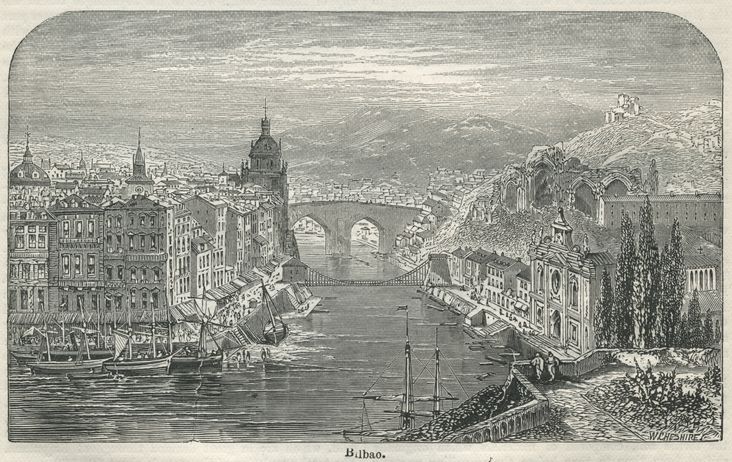Let’s approach this story by studying how language is used to create setting, in this case the setting is Bilbao. How do authors represent the world they live in? How do authors use the protagonist’s eyes to see a fictional world? Does that fictional world accurately mime the real world? How do Basque writers represent the rural country, cities, and neighborhoods? Uribarri is a neighborhood in Bilbao and the narrator is a young teenager.
“A Kiss in the Dark” is written in the first person and is a retrospective narration which adds a third aspect: memory. So when thinking about this story we must consider all three layers: the fictional world, the protagonist in his youth, and the retrospective narrator as an adult. These things aren’t mutually exclusive, which makes analysis difficult but is often simply understood by the reader.
The story is on some level recognizable and simple. It reminds me of Hawthorne’s “Young Goodman Brown”, Grimms’ “Hansel and Gretel”, and Borges’ “Labyrinth.” The protagonist makes an across-town journey going from Uribarri to Indautxu through a number of streets that seem foreign.
Something I barely thought about when I read this story for the first time was where these neighborhoods are in Bilbao. There is Calle Uribarri which is just east of the river and because of the mention of crossing the Town Hall Bridge (60) I will imagine the journey being from Calle Uribarri to Indautxu, a journey of 2.3 kilometers that will take 30 minutes to walk. Certainly this won’t be a challenge to most adults but it could be to our young protagonist, who has only gone into the city to visit the cinema or arcade, this errand will take the young man into “the city [that] seemed quite labyrinthine.”
Page sixty shows the reader Bilbao. I don’t have much of a desire to interpret these passages but simply to bring them to your attention: “So this was the perfect occasion to indulge in a thorough exploration of the place: the cinemas, the arcades, the shops where you could exchange comics, all the plush bars; I even spotted a dubious-looking ‘club’ with a red front door [….] I also saw old warehouses, dusty, broken blinds, dark bars and noisy garages.” In this section the protagonist journeys from the commercial neighborhood into more of an industrial section of the city. It is there that the protagonist meets the old woman.
As I previously mentioned, an active reader must take into account the perceiver, and I like to focus on modifiers such as adjectives and adverbs. Going through the previous sections there are a few examples, such as plush bars, dubious-looking ‘club’, menacing faces, broken blinds, dark bars, and noisy garages. Modifiers show the narrator’s perception. There’s no need to explain why the faces are ‘menacing’ or why he happened to notice the ‘broken’ blinds. But these words show the mind at work behind the eyes of the narrator.
The last thing I would like to address is how narrators indicate mental processes. On the final page the narrator says, “I remember the floor and walls were covered in tiles, just that. That and the doctor’s redolent, reverberating surname, which I shall never forget.” Mental processes include memory, introspection, reasoning, and beliefs. Everyone assembles the world, remembering some things and forgetting others. But these activities create a unique world. My final thought is a question I can’t answer. Does this fictional Bilbao accurately represent the real Bilbao (whether current or historical)? Mimesis, the act of imitation, is a central aspect to critical theory. As an American who has never traveled to Bilbao, I can’t begin to debate the accuracy of Cillero’s writing. But this story is beginning to paint a picture of the Basque Country in my mind.


